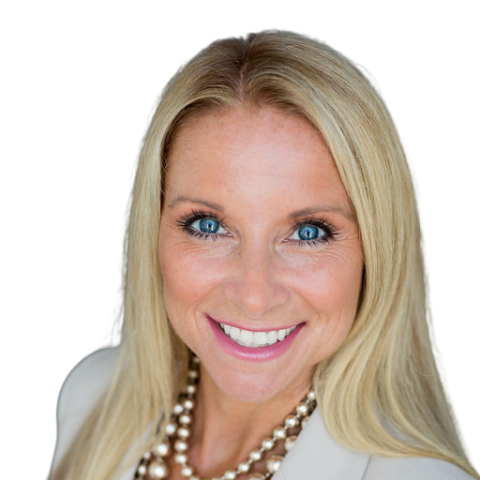The way people receive and communicate needs and information has taken a dramatic shift in the past few years. The number of people on Facebook is more than double the population of the United States. LinkedIn has grown 100 percent to 100 million professionals in the past year. There are 1.3 million “tweets” sent out from Twitter each hour.
This not only affects social connections, social media influences the way people communicate everyday needs, from shopping to childcare, and even more dramatic decisions including when and how to purchase a home. Web sites, including LendingTree.com, Homes.com and REALTOR.com, have capitalized on the online housing information knowledge acquisition need, but the challenge remains for many mortgage loan originators (MLOs), from top-performing industry veterans to green originators just stepping into the business, on how to compete for business in the new social media world.
Social media platforms have gone from a trend among high school and college students to a way of life for all demographics. Almost 25 percent of Facebook users are 25-34 years old and 30 percent are 35-54 years old. Those age groups are prime candidates for becoming first-time homebuyers, current homeowners looking to refinance and those looking to purchase another home because of life events, such as a new job, divorce or the arrival of children. But these potential customers are not visiting banks or credit unions in person. They have direct deposit, online bill pay and get pre-qualifications for auto loans online.
To capitalize on the communication shift, each MLO must devise his or her own strategy for embracing and using the technology tools that are available—to anyone—and compete for the same viewers by adding his or her own tactics. The question becomes:
“How does a single MLO or one company stand out to the 500 million people who view Facebook as their community more than they do people sitting right in front of them?”
Quite simply, each MLO needs to put him or herself in front of the opportunities. There needs to be a presence in the very media where prospective customers are spending the majority of their media time, and the MLO or company needs to be comfortable with and have the technology that facilitates this interaction or the borrower will not know the lender is out there.
This aspect of origination cannot be overlooked. A recent independent study performed by FirstUSA Data and commissioned by Mortgage Success Source found that originators that spent at least 33 percent of their time on customer acquisition had higher loan volumes than their peers. Specifically, the study found that more than 50 percent of originators who spent at least 33 percent of their time on customer acquisition were top-third performers. Only 10 percent of them were bottom-third performers.
New-age lead generation
Local real estate offices are just not the same anymore. While visiting an office with donuts and rate sheets was always considered a bit “old school,” at least the MLO might have had the chance to say hello to a few hungry agents. But things have changed and real estate agents are no longer in their offices waiting for the phone to ring. Instead, they network online, and look for market and financial knowledge to develop an edge. MLOs must make changes as well, having real-time market data, analysis and advice on their mobile device and must be able connect with agents and other referral partners.
In this new media age, the epitome of visibility is Google. If an LO in Denver enters “Mortgage in Denver” and does not come up as one of the top three or four responses, that LO is at an extreme disadvantage. Ideally, the MLO’s blog, Facebook page, personal Web site and ghost-written article will pop up, creating a presence and a new prospect. Ad words can be bought on Google, creating an instant presence if those words are typed into the browser, but a much less expensive way to have input in search engine optimization is to frequently contribute to sites and cross-promote with referral partners.
Establishing the connection
One of the most difficult things for any business to do is try to find customers and predict when they are going to need products or services. On average, 15 percent of an MLO or organization’s clients are going to need to buy a new home or refinance their current home each year. It is the same ratio for the rest of the population. The problem is there is just no connection between the MLO and the prospect.
Where those prospects are located is getting much easier to figure out. If an MLO wants to know who and where the potential clients are, it is not nearly as difficult as it might seem and will get increasingly easier. The average Facebook user is connected to 80 community pages, groups and events. The key is finding the prospects before there is a need. People’s needs for mortgages and almost any banking product are driven by major life events. Whether it is the birth of a child, loss of a spouse, a wedding, a move, a child’s graduation, a job transfer or pending retirement, many are predictable events.
When a known potential consumer decides the time is right to commit to a purchase, the MLO who reached out through social media has already created a connection between the prospect and him or herself. The MLO used social media to build brand awareness—the key is to engage the consumer by providing a bounty of useful and relevant information. Within the context of the banking and financial services world, and all business to client businesses, branding through social media creates trust and builds a foundation.
Unlike traditional bus stop ads, creatively placed business cards or a billboard, social media creates a dialogue instead of the traditional one-way conversation that used to occur with advertising. A name and phone number do little to create brand loyalty or trust. Prospects can reach out with questions and concerns, see interaction with current clients and receive information and advice through social media platforms. Data analytics reveal customer interest in viewing content and even gives clues to their financial needs through page-by-page reporting.
Obstacles and solutions
Social media is an adaption that MLOs and their companies must make to remain viable. Once the transition to social media has occurred, the opportunities for increased business present themselves through those new channels, but along with the new business potential, issues can also arise from attempting to remain relevant in these new ventures. Compliance, syndication and content creation all pose problems for MLOs entering the world of social media. Any communication an MLO has about finance from his or her personal social media account, the bank or parent institution is responsible for. The well-intentioned MLO who tries to reach new heights can end up penalizing themselves or their employers because the message was non-compliant. Syndicated messages, particularly direct marketing, are extremely viable solutions. Institutions can approve messaging sent to social media and e-mail and still get a personal touch by attaching an individual MLO’s picture, name and contact information.
Another challenge of meeting social media needs is finding interesting, timely content to give to consumers. The individual MLO must have real-time information to replace daily rate sheets and be able to easily explain the market along with giving reliable insight and advice. Newsletters, e-zines and market-related e-mails are all popular ways to communicate market information, but where does the information come from? Relevant content is the currency that builds business relationships, but MLOs cannot continually keep fresh, pertinent content flow on a daily basis along with their other knowledge and client acquisition duties. The investment should be made to procure an organized, established network of industry subject matter experts, talented writers and easy deliverability. This allows MLOs to stay current, build key relationships and not fall behind. Having this information automated along with other syndicated social messaging is a great way to keep abreast with the social media trend and gain business without losing productivity in other areas.
It’s clear that social media is not just a trend as it increasingly influences the way people communicate and do business. The only way an MLO and lending institutions can remain competitive is by making a push into social media through a well thought-out plan that supports the MLO’s sales and prospecting efforts. Such endeavors include search engine optimization (SEO); utilizing multiple multimedia platforms including blogging, Facebook, Twitter and LinkedIn; providing relevant messaging to establish a relationship and making sure they can be found. The dangers that come along with this new horizon are the risks of unregulated messaging, lack of syndication and branding and the need for content. Many MLOs and organizations are turning to professionals to handle messaging, content and real-time market knowledge and seeing a large increase in loan volume as a result. Are you one of them?
Sue Woodard is president of Mortgage Success Source, and has held many different roles during her nearly 20 years in the mortgage industry. A highly sought-after international speaker, trainer, writer and consultant for the mortgage and real estate industries, Sue and her top-producing team maintain a profitable and thriving origination practice in Minneapolis. Sue had her own successful financial radio show, has been featured on NBC and CBS Live News Radio, and has also been a guest on CNBC's SquawkBox and Jim Cramer's Mad Money. She is a member of her local mortgage association and board of Realtors, the Women's Council of Realtors and is on the National Advisory Board for Ellie Mae. She has a teenage daughter and firmly believes that sleep is overrated. She may be reached by phone at (800) 963-1900, ext. 1555 or e-mail
[email protected].

